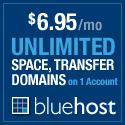Google pagerank is a score assigned to a webpage by Google from 1 to 10. Google assigns higher numbers to the pages it finds more significant or important. Google coined the term “pagerank”, but there are other types of search engine ranking systems like the Alexa traffic rank (which in my opinion in accurate).
In fact, all search engines (Yahoo, Ask.com, etc.) have their own method of ranking the importance of a webpage. Many website owners consider Googles pagerank the most important rating system because Google is the most popular search engine with internet users today and coupled with is they easiest way to make money online. There are several online tools available to determine the exact Google pagerank of a webpage. Some online tools allow you to enter the URL of a webpage and it will return the number assigned to the page. Google also has a toolbar available for download that will show the Google pagerank of any webpage at the top of your web browser.

How to Check Your Pagerank:
History of Google Pagerank
It is often assumed that the word “page” in pagerank is short for webpage. But the term was named after one of the founders of Google, Larry Page. Googles other founder was Sergey Brin. The two worked together at Stanford University where they began in 1995 to develop a way to rank search engine results. They finished their project in 1998, having developed Google as a search engine and its method of ranking the importance of search results.
Why is Google Pagerank Important?
As the most frequently used search engine on the internet, it is easy to see why Google pagerank is important to website owners, content developers, and internet marketers. Google pagerank is a numerical score assigned to the likelihood of your page success, much like a score assigned to an athlete’s performance in the olympics. Many hours have been spent by many website owners and search engine optimization experts trying to figure out how to improve Google pagerank. The final score is assigned using an algorithm, or mathematical calculation, used to arrive at the final score. There are several factors that are included in this algorithm such as number of inbound links, quality of inbound links and number of outbound links just to name a few.
To make it more difficult to manipulate Google pagerank, Google occasionally changes the way the weight and importance they give to each factor in making the calculation. An example of this change would be the “no follow” rule that took place in 2005. Prior to 2005, website owners would often place links to their website in forums and blog comments online in an effort to improve the pagerank of their webpage by building links to it. In 2005, Google implemented a strategy marking many of these links as “no follow” links causing them to remain uncounted when determining the number of links to a webpage. This was done in effort to reduce link spamming online.

Understanding the Google Algorithm
Nobody knows exactly what the Google Algorithm is because it is a trade secret. However, Google does share enough information about the algorithm to know that the calculation includes a dampening factor, the number of inbound links to your page, the rank of the page linking to your page, and the number of outbound links from your page. The dampening factor is the likelihood that an internet surfer is going to keep clicking links.
The dampening factor is thought to be .85 or an 85 percent chance that they will keep clicking. Leaving a 15 percent chance that they will stop clicking. The number of quality inbound links your page has is large factor of the overall page rank assigned by Google. Quality links meaning that the pagerank of the referring page influences the calculation. An inbound link from a webpage with a pagerank of 0 does little if anything to improve pagerank of your page. Outbound links negatively impact your pagerank. It is sometimes important to link to other websites, but you must no that every outbound link lowers your overall page rank. In a nutshell the algorithm is said to look something like this:
YPR = (1-D) + (D(IPR(IL)/(OL(IL))
Key
YPR = Your Pagerank
D = Dampening Factor (thought to be .85)
IPR = Pagerank of Pages Linking to Yours
IL = Number of Inbound Links
OL = Outbound Links
Here is an example of the algorithm with numbers plugged into it assuming the dampening factor of .85, the rank of inbound links is 2, and your page has 5 inbound links and 1 outbound link.
2.17 = .85 + .85(2(5))/(1(5))
The Math: .85 +10.85/5=2.17
Key
YPR = 1.3925
D = .85
IPR = 2
IL = 5
OL = 4
What All Does all this Technical Mumbo-Jumbo Mean?
Ok, forget what you just read. This is what really matters:
PR8,PR9 and PR10 are the best of the best online. Ebay, ESPN, Google (of course) and The Whitehouse.gov website will fall into this category.
PR7 and PR6 are above average and will usually rank well for their targeted keywords, plus a few others they weren’t even trying for.
PR3 – PR5 are average, but still require a bit of work to earn.
PR0 – PR2 are the easiest rankings to receive. Having enough inbound links will get you at this level.
Improve Your Google Pagerank
You can’t do anything to change the how the Google Alogorithm measures your site. What you can influence easily is the number of outbound links from your webpage. Consider every outbound link carefully and delete the ones that aren’t necessary. Inbound links is another way that the overall rank of your webpage can be influenced. The idea is to get inbound links from highly rank webpages. You can do this through a variety of methods, by posting link to your website on quality websites that don’t mark the links as “no follow.” You can network with other website owners to interlink your websites. You can also consider paid inclusion, which is when you pay search engines to include you in their indexes. Paid advertising through a program such as Google adwords can also get your website plenty of inbound link exposure. Read more About Link Building.
Tips to Improve your PageRank
Lets, be honest. Google rules the web. Google isn’t perfect, but get get pretty darn close. Along with the tips listed below be sure to add images, video, etc integrated into your site (labeled with your respective keywords). This will allow additional ways for your website to be indexed in the new Universal Search. Universal Search allows Google to inject results from its other databases, such as Google Video (including You Tube), Google Base, Google Local, Froogle, etc.
- Review page every 4 months
- Subscribe to webmaster forums, like Webmaster World
- Get a few from Google
- Visit Matt Cutts Blog the resident “Spam Czar” at Google
- Be aware of
- Information on
- Learn how to
- Check out the official Google Adwords Blog
- Make sure your website is accessible in most browsers
Things to Remember
- Google uses an incremental index — expect changes on a daily basis.
- Google does a lot of testing during the summer months and over US holiday weekends.
- Visible backlink updates occurs every 3-5 weeks.
- Visible PageRank updates occurs every 3-4 months.
- The Visible PageRank and backlinks numbers are often months old, and they have NO effect on the current ranking in the SERPs.
- There is no penalty for the use of iFrames or JavaScript.
- Focus less on ranking and more on quality traffic and conversions.
- Build a site with your target market in mind.
- Focus on Web Analytics parameters (bounce rates, page views, time on site), as these will help your SEO efforts, as well as your
overall marketing efforts. By knowing which keyword phrases are causing the most “stickiness” of your site, you will know where to
concentrate your SEO efforts.
How to Get Your Google Pagerank Removed and/or Get Your Site Banned from Google
Any webpage with a score lower than 1 is said to have no page rank, or 0. If you take a look at the equation above you can see that the quickest way to get a page rank of zero remove all outbound links, or inbound links.
- Create Hidden Links – having text on your webpage the same color and the background.
- Create Hidden Text – having keywords at the top of your webpage that are the same color as the background.
- Allow Trackbacks to Suspect Websites – Suspect websites are ones that promote illegal activities or are total spam blogs
- Don’t Moderate Your Comments – many spammers will try to steal some of your Google Juice which link to suspect websites
- Create Keyword Filled Pages – also called keyword stuffing. You too many of your keywords on one page. The ration for keyword is around 5 per 100 words or 5%.
I’m sure there are tons more ways, but these are enough to get you yanked for sure.






